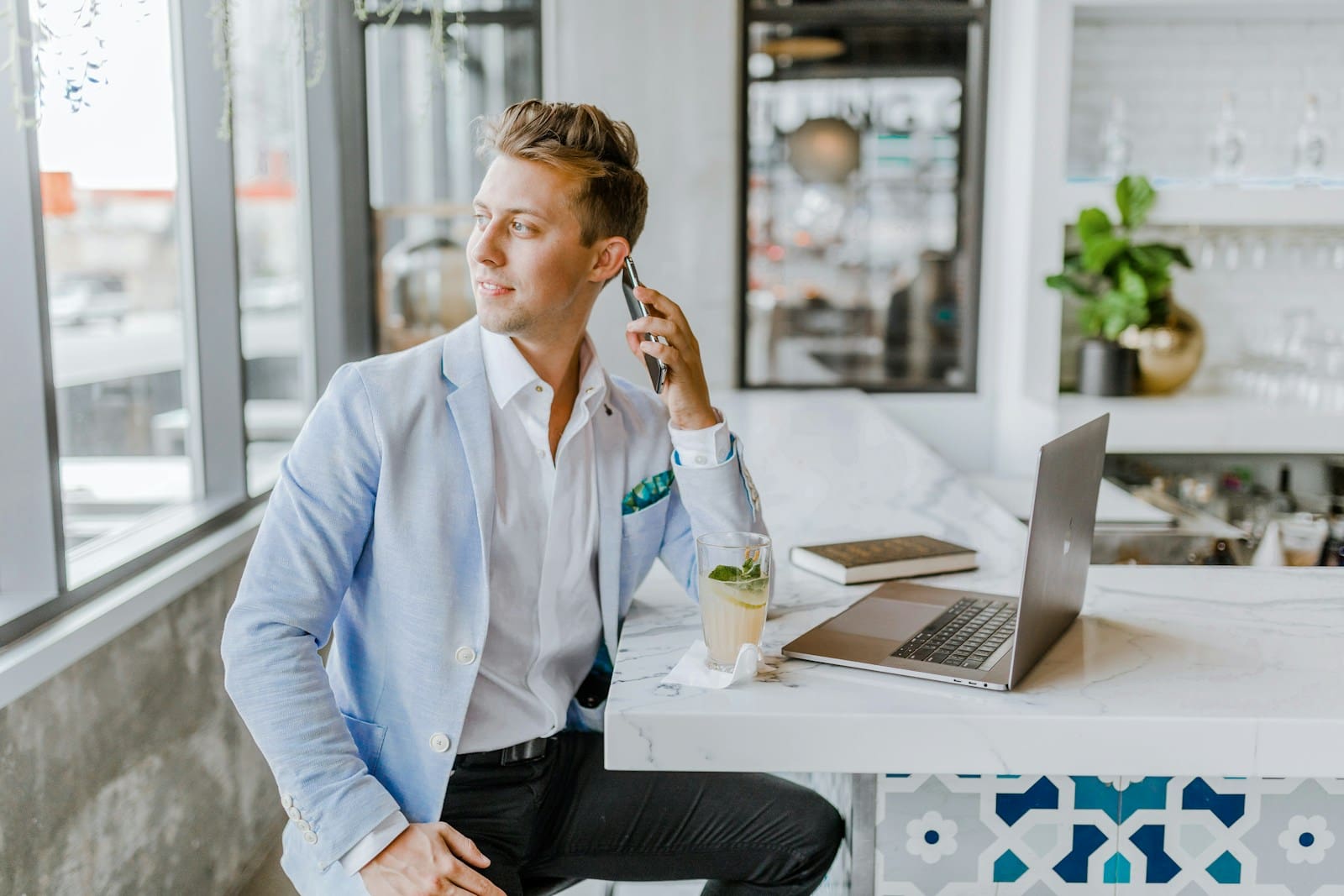How your wardrobe choices shape your mindset and others’ perceptions
As a project manager juggling client meetings and team leadership, I’ve learned that what I wear significantly impacts not just how others perceive me, but how I perceive myself. The psychology behind “dressing for success” isn’t just corporate folklore – it’s backed by research and has tangible effects on your confidence, performance, and career trajectory.
The science behind the clothes you wear
The concept of “enclothed cognition” explains why wearing certain outfits can literally change how we think and perform. When I switched from casual attire to more polished business casual for important client meetings, I noticed an immediate shift in my approach.
There’s substantial research supporting this concept. A well-known 2012 study published in the Journal of Experimental Social Psychology explored how wearing certain clothing affects cognitive performance. Researchers found that attention and performance can be influenced by the symbolic meaning we attach to what we’re wearing. The clothes we wear carry psychological weight that can influence our cognitive processes and behavior.
This psychological effect manifests in several ways:
- Mental preparation: Changing into work clothes creates a psychological boundary between home life and work mode
- Confidence boosting: Well-fitted, appropriate attire reduces self-consciousness and increases focus on the task at hand
- Authority signaling: Professional attire can enhance your perceived expertise and credibility with clients
In my own experience, I’ve found this especially true when leading challenging project kickoffs. The days I dress more professionally, I feel more equipped to handle difficult client questions and guide my team effectively.
How appearance shapes others’ perceptions
While self-perception matters, the reality is that others form impressions based on appearance too. Studies on first impressions suggest that people form initial judgments very quickly.
Business and psychology literature frequently cites that meaningful first impressions form within seconds of meeting someone, with appearance playing a significant role in those snap judgments.
In the agency world, I’ve witnessed how appearance impacts client relationships. When our team presents polished, cohesive appearances in client meetings, we establish credibility before sharing a single portfolio piece. This initial trust makes the entire project process smoother.
The impact varies across industries:
- Creative fields: While there’s more flexibility, intentional style choices still signal professionalism and attention to detail
- Corporate environments: More formal attire typically correlates with perceptions of competence and leadership potential
- Client-facing roles: Appearance that aligns with or slightly exceeds client expectations builds instant rapport
This doesn’t mean conforming to outdated dress codes. Rather, it’s about understanding the visual language of your industry and using it deliberately.
Personal branding through your wardrobe
Just as companies invest in brand identity, your appearance forms a crucial part of your personal brand. When building my side business, I became more intentional about creating consistency between my online presence and in-person appearance.
Effective personal branding through clothing includes:
- Developing a signature style that feels authentic while projecting professionalism
- Using color choices strategically (I’ve found that certain colors like blue, gray, and white can help project professionalism in important client presentations)
- Ensuring your appearance aligns with your professional goals and the impression you want to make
The most effective personal branding doesn’t feel like a costume. It’s an authentic expression that aligns with your personality while strategically highlighting your professional strengths.
The confidence factor: how clothing affects performance
The most powerful aspect of dressing well is its impact on your own mental state and performance. When I prepare for high-stakes presentations or difficult client conversations, I view my outfit as part of my preparation strategy.
This confidence boost happens through several mechanisms:
- Reduced decision fatigue: Having go-to professional outfits eliminates morning stress
- Posture improvement: Well-fitted clothing naturally improves posture, which influences how confidently you communicate
- Psychological armor: Appropriate attire can provide a sense of protection in challenging professional situations
I’ve found this particularly relevant when transitioning between my agency role and entrepreneurial projects. The right outfit helps me mentally shift between these different mindsets and responsibilities.
Practical strategies for building a confidence-boosting wardrobe
Building a wardrobe that enhances confidence doesn’t require an extreme makeover or massive budget. Instead, it’s about thoughtful curation and understanding what works for your specific context.
For professionals juggling multiple responsibilities like I do, here’s what works:
1. Invest in versatile foundational pieces that work across contexts
- Quality basics in neutral colors provide maximum flexibility
- Focus on excellent fit rather than quantity of items
2. Understand the specific expectations of your industry and role
- Observe successful people in positions you aspire to
- Adapt industry standards to your personal style rather than abandoning your identity
3. Plan outfits for high-stakes situations in advance
- Remove decision-making stress on important days
- Test outfits before critical meetings to ensure comfort and confidence
4. Pay attention to the details that signal professionalism
- Well-maintained shoes
- Appropriate accessories that enhance rather than distract
- Consistent grooming habits
My approach combines planning with authenticity – having go-to outfits for different professional contexts while ensuring my appearance remains a genuine expression of who I am.
Finding balance: authenticity and strategic presentation
The most sustainable approach to dressing for success balances authentic self-expression with strategic presentation. This tension is something I navigate daily between my agency work and entrepreneurial ambitions.
When building my own business, I initially felt pressure to adopt an entirely different appearance. What I discovered instead was that thoughtfully evolving my style to match my goals worked better than a complete reinvention.
The key is alignment – your appearance should feel like an authentic expression of who you are professionally, not a costume you put on. This authenticity itself breeds confidence.
The bigger picture: appearance as one tool in your professional toolkit
While appearance significantly impacts confidence and perception, it’s just one element of professional success. I view dressing well as part of a holistic approach to professional development that includes skills, networking, and performance.
My wardrobe choices complement my project management expertise and leadership abilities – they don’t replace them. The most powerful combination is strong professional capabilities presented with thoughtful attention to appearance.
For professionals at any stage, especially those balancing multiple roles as I do, thinking strategically about appearance offers a relatively simple way to enhance confidence and effectiveness. The goal isn’t perfection but intentionality – using clothing as a tool to support your professional goals and mental state.
What I’ve found most valuable isn’t following rigid rules but understanding the psychology behind appearance and leveraging it thoughtfully. When your outward presentation aligns with your professional goals and inner capabilities, the resulting confidence becomes a powerful catalyst for success.







